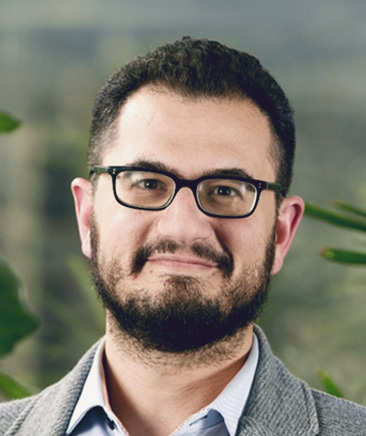Originally published by InVivo.
In 2019, the pharmaceuticals industry invested more than half a trillion dollars in M&A and R&D combined. These “bets” are often expensive and speculative: it typically costs $1bn to develop a new drug, with only a 6.9% chance of getting from Phase I development to FDA approval in the US.
A small minority of products that get marketing authorization cross the “blockbuster” $1bn sales threshold in their peak year. This investment challenge is becoming more acute with pricing pressures and mounting patent expirations in sectors that have fueled industry growth in the last decade, including oncology. It is also by no means unique to pharma; business models with steep upfront investments and long, uncertain payoff horizons are familiar to movie developers, airplane manufacturers and mineral miners.
While there will never be a perfect formula to predict which pharma products will win or lose, there is a formula for portfolio-level investment strategy. ZS completed an extensive analysis to evaluate portfolio focus and by category leadership for the 20 pharma manufacturers with the most revenue in the last decade (2010 to 2019 to avoid distortions due to COVID-19). ZS defined “focus” as the portion of a company’s revenue from their top-three therapy areas (TAs), and “leadership” as the portion of a company’s TAs in which they are a top-two player. TAs are defined by the American Medical Association, according to the specialty of the primary prescribing physician (such as hematology oncology).
“A small minority of products that get marketing authorization cross the "blockbuster" $1bn sales threshold in their peak year.”
Over the last decade, the average top-20 pharma company earned approximately two-thirds of its revenue from its three highest-grossing TAs and was a leader in one or two of those TAs. For eight of the 20 top pharma companies with average or better focus and leadership, the payoff was significant. Relative to their peers, they grew at a 7% versus 0.2% annualized rate with an additional 13 percentage points of operating margin. For every dollar of growth these companies earned, they added around 50% more to their market cap than their peers.
To illustrate, ZS highlighted two of these top-20 pharma companies, Sanofi and Novo Nordisk A/S. In 2019, Sanofi averaged a market cap of around $126bn while Novo averaged $108bn. (At the time of writing, Novo’s market cap had exceeded Sanofi’s.) In the same year, Sanofi’s revenue was more than two times that of Novo’s, with around a third higher EBITDA. Novo earned almost all its revenue from one TA, diabetes/endocrinology, in which it is the top-earning company, while scripts for Sanofi products came from more than a dozen medical specialties and the top three contributed just over half of Sanofi’s revenue.
The mechanics of this value creation are intuitive. Markets reward a clear strategy, category ownership and financial performance. Focusing on a few markets rather than looking for footholds in as many as possible enables business units to realize more cost synergies per dollar earned. The companies on ZS’s list found these synergies in roughly equal parts from selling, general and administrative expense (SG&A) and cost of goods sold (COGS), varying significantly company to company. (Gross-to-net sales, or rebates, were not assessed as most companies do not report this data publicly.) Only Pfizer Inc. was able to achieve above-average operating profit over the last decade without also having average or better TA focus. They accomplished this primarily through significantly lower cost of sales relative to their large and highly diversified peers, and slightly lower R&D expenditures as a percent of revenue.
Looking back at the last decade of mega-blockbusters like AbbVie Inc.’s Humira (adalimumab) and Gilead Sciences, Inc.’s Harvoni (ledipasvir/sofosbuvir), an observer could reasonably conclude that focus misses the point: some companies are just better at finding winning products than others. These mega-blockbusters have propelled their developers to focus by the magnitude of their growth. It’s true there’s a clear relationship between large pharma companies with the strongest revenue growth and those with TA focus, but which is the cause, and which is the effect? TA focus, it turns out, is very sticky. Large companies with above-average revenue growth had the same net change in focus as their slower-growing peers: zero. These companies could not have grown their way into focus because they were focused the whole time.
While US GDP was growing 3.6% year-over-year from 2010 to 2019, no large pharma company with below-average TA focus hit this benchmark. On the other hand, two pharma companies with above-average TA focus, Eli Lilly and Company and AstraZeneca PLC, contracted during this period; their stories are instructive examples of the need to look ahead and proactively invest in new anchor TAs. For those who can recall pharma industry news in 2010, these two were well known to have the most to lose from impending patent cliffs. Lilly’s psychiatry sales plummeted nearly 70% from 2011 to 2015, due in large part to its loss of patent exclusivity for mega-blockbuster Cymbalta (duloxetine). AstraZeneca’s similar-sized psychiatry loss with Seroquel (quetiapine) was compounded by the loss of exclusivity for Crestor (rosuvastatin calcium). Both companies invested in some existing and one new TA each to make up for these losses, but it was too little too late.
While the idea of creating focus in your business is simple, doing so is deceptively challenging. ZS works extensively across the pharmaceutical industry, including with all 20 companies in this analysis. In our collective observations, there are two fundamental reasons that focus is a challenge in pharma: inertia and uncertainty.
Inertia
Too often, we see pharma companies arriving at their product portfolio as a result of process rather than foresight and intent. Research teams explore uses of existing and future platforms to solve problems in a plethora of diseases, development teams test the ideas that are most likely to work in the clinic, and investment decisions are made based on an asset’s potential rather than fit with broader portfolio strategy.
There are two ways to break this pattern: systematic, recurring portfolio strategy assessment, linking asset-level investment decisions to portfolio strategy, and expanding use of business development to reshape the pipeline around portfolio strategy. As an example of the latter, while having no oncology revenue at the start of the last decade, Gilead Sciences spent almost twice as much acquiring or licensing oncology products as all other TAs combined in the last 10 years.
Uncertainty
Unpredictable outcomes can become a roadblock to focus, particularly when a company’s product pipeline is highly fragmented across TAs. Of course, this uncertainty can cut both ways. When Merck bought Schering- Plough in 2009, the primary acquisition rationale was scale. They also knew that Schering-Plough offered an opportunity to diversify Merck’s portfolio in biopharmaceuticals, but they did not know that the acquisition’s biggest steal was Keytruda. In fact, Merck initially shuttered the Keytruda program, which has turned out to be the largest individual growth driver in Merck’s portfolio from 2015 through today.
A Path Toward Focus
Many pharma companies also fall into the trap of believing they are “too big” for focus, but this is a red herring. Roche Holding AG saw 2019 pharma sales of $48.8bn and the company made 70% of that revenue from just three TAs. You do not need to have focused, as Roche did, in medical oncology or hematology oncology, the first and third largest TAs, to get to scale. If you built a company out of Novo Nordisk’s diabetes/endocrinology TA, GlaxoSmithKline’s respiratory TA and Gilead’s HIV TA, that company would have come close to Roche-sized revenue haul in 2019.
Trying to “diversify” your way to outsized growth in pharma would be to defy history. There’s no evidence that TA diversification beyond a few focus areas reduces the risk in your business, only that it limits the upside. This will be a hard pill to swallow for many companies. (A pharma article without a single pharma pun would be a shame.) ZS sees several critical steps that companies serious about focus need to take:
- Set a TA strategy around a few focus areas with a 10-year horizon and a mandate to achieve market share goals in those TAs.
- Link your research, development and commercial objectives directly to this TA strategy, and shape your recurring resource allocation process around these centers of focus. This strategy should include tough and specific decisions about where not to play.
- Diversify your risk within focus TAs by making lots of bets, big and small, in both early- and late-stage development; you can’t be certain what will work.
- Outside core TAs, keep an eye on cutting-edge science and invest in earlier-stage assets with low cost of entry but high upside as these could anchor future focus areas. Divest assets that do not fit this strategy.
- Consider external asset opportunities just as often as you consider internal ones; assume you may have good ideas but not always the best ideas.
For businesses that are far from our benchmarks, transformational M&A may be the only viable way to detach from the existing model. Others that are closer can carefully divest from non-core TAs while adding partnerships, licenses and bolt-on acquisitions to focus TAs. The balance of these activities will depend on how abruptly revenue gaps are expected in a forecast.
Whatever the starting point, there is a path to focus, and that path will lead to outsized value creation.
Interested in learning more? Listen to The Value of Focus podcast.
Add insights to your inbox
We’ll send you content you’ll want to read – and put to use.















